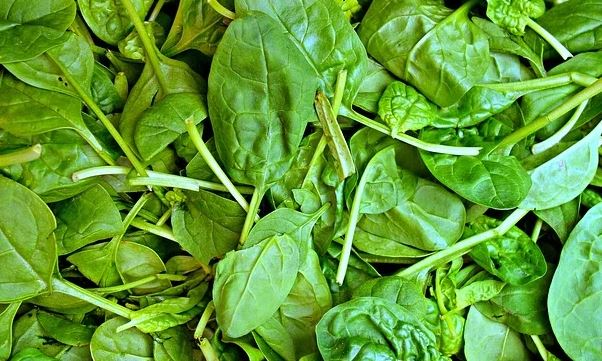Elaboration of added spinach muffins and lactose and gluten free
DOI:
https://doi.org/10.20873/jbb.uft.cemaf.v9n2.ferreiraKeywords:
Spinacea oleracea, sensory acceptability, characterization, bread, makingAbstract
Due to the concern with the maintenance of health, together with the increase in people with dietary restrictions, mainly allergies and intolerances, it was necessary to develop products that would serve this audience. In this sense, this study aims to prepare and characterize muffins added with spinach and free from lactose and gluten, in order to serve people with allergies and intolerances. Four muffin formulations were made: F1 (standard formulation: no spinach added, F2 (formulation with 25% addition of spinach leaves), F3 (formulation with 50% addition of spinach leaves), F4 (formulation with added 75% spinach leaves) keeping the same proportion for the other ingredients. Physical, chemical, microbiological, and sensory characterization were performed. The insertion of spinach reduced the diameter and thickness of the muffins with a variation of up to 8%. The moisture content increased as the amount of spinach increased. The muffins were colored in black and green. All formulations showed microbiological stability. The sensorial acceptability was expressive, with scores higher than 6, with samples being preferred to formulations F1 and F2. Thus, viability was observed in the production of muffins added with spinach and free from lactose and gluten. All formulations showed physical, chemical, and microbiological stability, being considered suitable for consumption.
References
AACC. American Association of Cereal Chemists. Approved methods of the AACC. 9.ed. St. Paul: AACC, 1995. 1200p.
American Public Health Association – APHA. Compendium of methods for the microbiological examination of foods. Washington, DC, 2001. 676 p.
AOAC. Association Of Oficial Analytical Chemistral. Official methods of analysis of the association of official analytical chemistry. 11th ed, AOAC, Arlington. 1992.
AOAC. Association Of Oficial Analytical Chemistral. Official methods of analysis of the association of official analytical chemistry. 16th ed, AOAC, Arlington. 1995.
Augusto G, Zanlourensi CB, Chiconatto P, Schmitt P. Aceita-ção de cupcakes com farinha de talos de couve manteiga e farinha de talos de espinafre por escolares do município de Prudentópolis-PR. Revista Brasileira de Obesidade, Nutri-ção e Emagrecimento, v. 68, p.731-737, 2017.
BRASIL. Ministério da Saúde. Agência Nacional de Vigilân-cia Sanitária. Resolução RDC No 12 de 02 de janeiro de 2001. Aprova o regulamento Técnico sobre Padrões Micro-biológicos para Alimentos. Diário Oficial da União, Brasília, 10 de janeiro de 2001.
Dutcosky, S. D. Análise sensorial de alimentos. Curitiba: Champagnat. 2013
Ferreira THB, Basaglia RR, Cunha TMP, Argandona EJS. Muffins de beterraba adicionados de ora-pro-nobis: Caracte-rização física. Anais do III Sinatex, v.3, p.179-184, 2019.
Ferreira THB, Freitas MLF. Production, physical, chemical and sensory evaluation of dried banana (Musa Cavendish). Emirates Journal of Food and Agriculture, v.31, p.102-108, 2019.
Galla NR, Pamidighantam PR, Karakala B, Rudrayya M, Akula GS. Nutritional, textural and sensory quality of bis-cuits supplemented with spinach (Spinacia oleracea L.). In-ternational Journal of Gastronomy and Food Science, v.7, p. 20-26, 2017.
Kirca A, Özkan M, Cemeroğlu B. Storage stability of straw-berry jam color enhanced with black carrot juice concentrate. Journal Food Procesess and Preservation, v.31, p.531-545, 2007.
KUNTZ MGF. Efeitos da inulina nas propriedades físicas, químicas, de textura e aceitabilidade no desenvolvimento de muffin destinado a consumidores em idade escolar. 2013. 150 f. Tese (Doutorado em Ciência de Alimentos)–Programa de Pós-Graduação em Ciência e Tecnologia de Alimentos, Universidade Federal de Santa Catarina, Floria-nópolis, 2013.
Mansueto P, D’alcamo A, Seidita A, Carroccio A. Food aller-gy in irritable bowel syndrome: The case of non-celiac wheat sensitivity. World Journal of Gastroenterology, v.21, p.7089–7109, 2015. https://doi.org/10.3748/wjg.v21.i23.7089
Mazzocchi A, Venter C, Maslin K, Agostoni C. The Role of Nutritional Aspects in Food Allergy: Prevention and Man-agement. Nutrients, v.9, p.850-857, 2017.
Munhoz CL, Ferreira THB, Florencio EMC, Souza LH. De-senvolvimento de Barra de Cereais de Castanha de Baru En-riquecidas com Prebióticos. Cadernos de Agroecologia, v. 13, p. 1-7, 2018.
Rangel AHN, Vendas DC, Urbana AS, Galvão Júnior JGB, Andrade Neto JC, Macêdo CS. Lactose intolerance and cow's milk protein allergy. Food Science and Technology, v.36 p.179-187, 2016. https://doi.org/10.1590/1678-457X.0019
Rocha DS, Reed E. Pigmentos Naturais em Alimentos e sua Importância para Saúde. Estudos, v.41, n.1, p. 76-85. 2014.
Santos JR, Boêno JA. Muffins isentos de glúten e lactose desenvolvidos com resíduo de polpa de graviola. Revista de Agricultura Neotropical, v.3, p.42-51, 2016.

Downloads
Published
How to Cite
Issue
Section
License
Copyright (c) 2024 - Journal of Biotechnology and Biodiversity

This work is licensed under a Creative Commons Attribution 4.0 International License.
Authors who publish with this journal agree to the following terms:
Authors retain copyright and grant the journal right of first publication with the work simultaneously licensed under a Creative Commons Attribution License (CC BY 4.0 at http://creativecommons.org/licenses/by/4.0/) that allows others to share the work with an acknowledgement of the work's authorship and initial publication in this journal.
Authors are able to enter into separate, additional contractual arrangements for the non-exclusive distribution of the journal's published version of the work (e.g., post it to an institutional repository or publish it in a book), with an acknowledgement of its initial publication in this journal.
Authors are permitted and encouraged to post their work online (e.g. in institutional repositories or on their website) prior to and during the submission process, as it can lead to productive exchanges, as well as earlier and greater citation of published work (Available at The Effect of Open Access, at http://opcit.eprints.org/oacitation-biblio.html).


